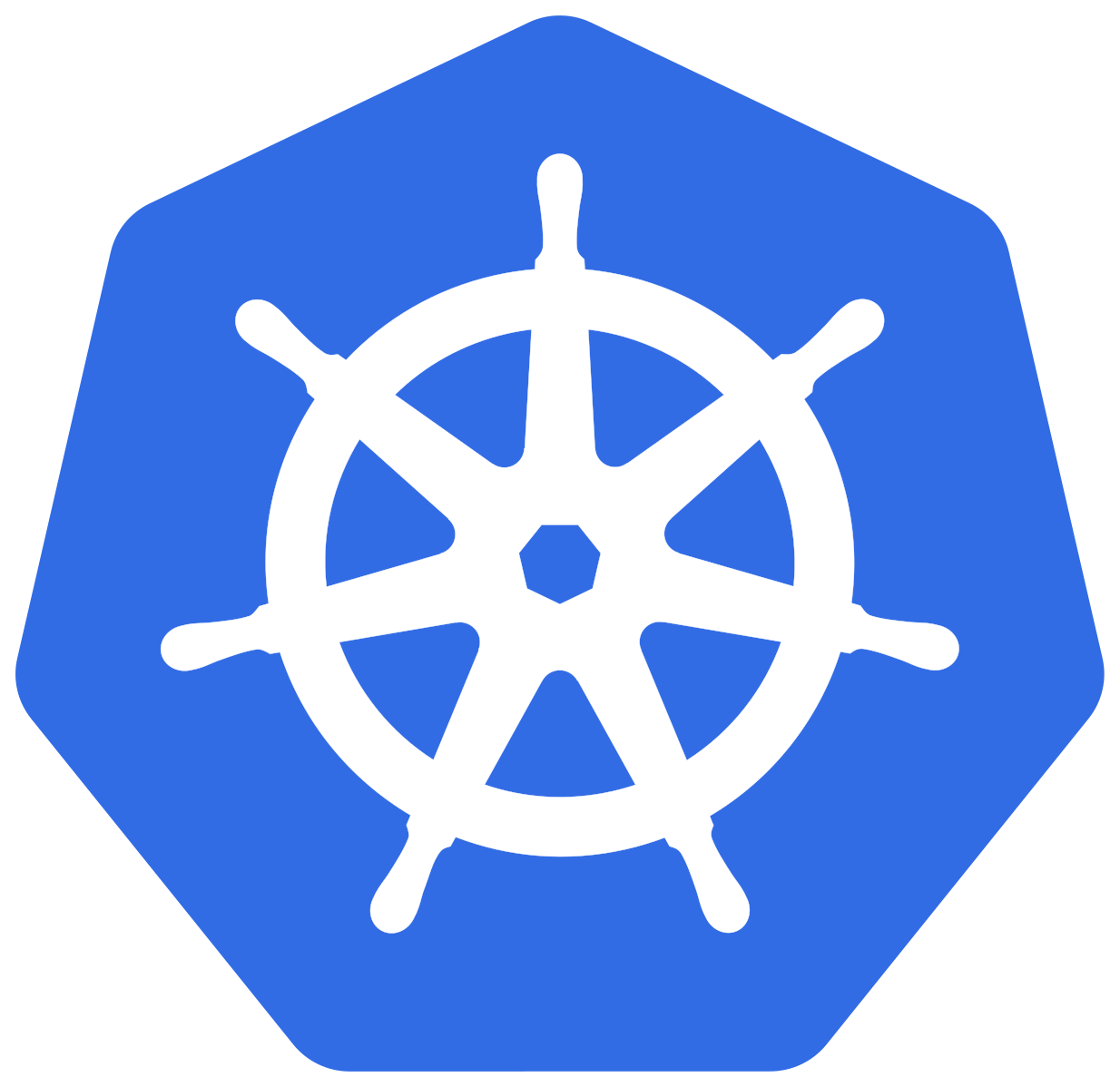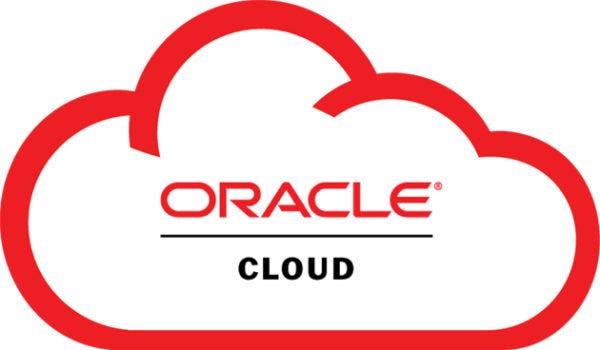Kubernetes with Calico
Cluster deployment
Do you know how to build a cluster? Would you like to learn to automate it? then this workshop is for you!
There are a million ways to deploy a cluster, this workshop gives you a walkthrough of couple of these methods that are usually used in a enterprise setup to create a cluster.
Deploy a k3s cluster
root@control:~# curl -sfL https://get.k3s.io | K3S_KUBECONFIG_MODE="644" INSTALL_K3S_EXEC="--flannel-backend=none --cluster-cidr=172.16.0.0/16 --disable-network-policy --disable=traefik,local-storage,metrics-server" sh -
[INFO] Finding release for channel stable
[INFO] Using v1.32.3+k3s1 as release
[INFO] Downloading hash https://github.com/k3s-io/k3s/releases/download/v1.32.3+k3s1/sha256sum-amd64.txt
[INFO] Downloading binary https://github.com/k3s-io/k3s/releases/download/v1.32.3+k3s1/k3s
[INFO] Verifying binary download
[INFO] Installing k3s to /usr/local/bin/k3s
[INFO] Skipping installation of SELinux RPM
[INFO] Skipping /usr/local/bin/kubectl symlink to k3s, command exists in PATH at /snap/bin/kubectl
[INFO] Creating /usr/local/bin/crictl symlink to k3s
[INFO] Skipping /usr/local/bin/ctr symlink to k3s, command exists in PATH at /usr/bin/ctr
[INFO] Creating killall script /usr/local/bin/k3s-killall.sh
[INFO] Creating uninstall script /usr/local/bin/k3s-uninstall.sh
[INFO] env: Creating environment file /etc/systemd/system/k3s.service.env
[INFO] systemd: Creating service file /etc/systemd/system/k3s.service
[INFO] systemd: Enabling k3s unit
Created symlink /etc/systemd/system/multi-user.target.wants/k3s.service → /etc/systemd/system/k3s.service.
[INFO] systemd: Starting k3s
root@control:~#
Copy the cluster key file
root@control:~# cp /etc/rancher/k3s/k3s.yaml ~/.kube/config
root@control:~# kubectl config view
apiVersion: v1
clusters:
- cluster:
certificate-authority-data: DATA+OMITTED
server: https://127.0.0.1:6443
name: default
contexts:
- context:
cluster: default
user: default
name: default
current-context: default
kind: Config
preferences: {}
users:
- name: default
user:
client-certificate-data: DATA+OMITTED
client-key-data: DATA+OMITTED
root@control:~#
root@control:~# kubectl get nodes
NAME STATUS ROLES AGE VERSION
control NotReady control-plane,master 4m35s v1.32.3+k3s1
root@control:~# kubectl get pods -A
NAMESPACE NAME READY STATUS RESTARTS AGE
kube-system coredns-ff8999cc5-xcnm2 0/1 Pending 0 4m33s
root@control:~#
Install Calico
The recommended way to install Calico is through the tigera-operator. The best part about an operator-based installation is its integration with Kubernetes because it can group Pods, Deployments, Configmaps, or services that are required for your cloud-native application and give you a single interface to manage and deploy them. With the help of the operator SDK, the tigera-operator can configure, maintain or upgrade your Calico installation.
Use the following command to install tigera-operator:
root@control:~# kubectl create -f https://raw.githubusercontent.com/projectcalico/calico/v3.27.0/manifests/tigera-operator.yaml
namespace/tigera-operator created
customresourcedefinition.apiextensions.k8s.io/bgpconfigurations.crd.projectcalico.org created
customresourcedefinition.apiextensions.k8s.io/bgpfilters.crd.projectcalico.org created
customresourcedefinition.apiextensions.k8s.io/bgppeers.crd.projectcalico.org created
customresourcedefinition.apiextensions.k8s.io/blockaffinities.crd.projectcalico.org created
customresourcedefinition.apiextensions.k8s.io/caliconodestatuses.crd.projectcalico.org created
customresourcedefinition.apiextensions.k8s.io/clusterinformations.crd.projectcalico.org created
customresourcedefinition.apiextensions.k8s.io/felixconfigurations.crd.projectcalico.org created
customresourcedefinition.apiextensions.k8s.io/globalnetworkpolicies.crd.projectcalico.org created
customresourcedefinition.apiextensions.k8s.io/globalnetworksets.crd.projectcalico.org created
customresourcedefinition.apiextensions.k8s.io/hostendpoints.crd.projectcalico.org created
customresourcedefinition.apiextensions.k8s.io/ipamblocks.crd.projectcalico.org created
customresourcedefinition.apiextensions.k8s.io/ipamconfigs.crd.projectcalico.org created
customresourcedefinition.apiextensions.k8s.io/ipamhandles.crd.projectcalico.org created
customresourcedefinition.apiextensions.k8s.io/ippools.crd.projectcalico.org created
customresourcedefinition.apiextensions.k8s.io/ipreservations.crd.projectcalico.org created
customresourcedefinition.apiextensions.k8s.io/kubecontrollersconfigurations.crd.projectcalico.org created
customresourcedefinition.apiextensions.k8s.io/networkpolicies.crd.projectcalico.org created
customresourcedefinition.apiextensions.k8s.io/networksets.crd.projectcalico.org created
customresourcedefinition.apiextensions.k8s.io/apiservers.operator.tigera.io created
customresourcedefinition.apiextensions.k8s.io/imagesets.operator.tigera.io created
customresourcedefinition.apiextensions.k8s.io/installations.operator.tigera.io created
customresourcedefinition.apiextensions.k8s.io/tigerastatuses.operator.tigera.io created
serviceaccount/tigera-operator created
clusterrole.rbac.authorization.k8s.io/tigera-operator created
clusterrolebinding.rbac.authorization.k8s.io/tigera-operator created
deployment.apps/tigera-operator created
root@control:~#
root@control:~# kubectl get crds
NAME CREATED AT
addons.k3s.cattle.io 2025-04-11T06:09:20Z
apiservers.operator.tigera.io 2025-04-11T06:14:30Z
bgpconfigurations.crd.projectcalico.org 2025-04-11T06:14:30Z
bgpfilters.crd.projectcalico.org 2025-04-11T06:14:30Z
bgppeers.crd.projectcalico.org 2025-04-11T06:14:30Z
blockaffinities.crd.projectcalico.org 2025-04-11T06:14:30Z
caliconodestatuses.crd.projectcalico.org 2025-04-11T06:14:30Z
clusterinformations.crd.projectcalico.org 2025-04-11T06:14:30Z
etcdsnapshotfiles.k3s.cattle.io 2025-04-11T06:09:20Z
felixconfigurations.crd.projectcalico.org 2025-04-11T06:14:30Z
globalnetworkpolicies.crd.projectcalico.org 2025-04-11T06:14:30Z
globalnetworksets.crd.projectcalico.org 2025-04-11T06:14:30Z
helmchartconfigs.helm.cattle.io 2025-04-11T06:09:20Z
helmcharts.helm.cattle.io 2025-04-11T06:09:20Z
hostendpoints.crd.projectcalico.org 2025-04-11T06:14:30Z
imagesets.operator.tigera.io 2025-04-11T06:14:30Z
installations.operator.tigera.io 2025-04-11T06:14:30Z
ipamblocks.crd.projectcalico.org 2025-04-11T06:14:30Z
ipamconfigs.crd.projectcalico.org 2025-04-11T06:14:30Z
ipamhandles.crd.projectcalico.org 2025-04-11T06:14:30Z
ippools.crd.projectcalico.org 2025-04-11T06:14:30Z
ipreservations.crd.projectcalico.org 2025-04-11T06:14:30Z
kubecontrollersconfigurations.crd.projectcalico.org 2025-04-11T06:14:30Z
networkpolicies.crd.projectcalico.org 2025-04-11T06:14:30Z
networksets.crd.projectcalico.org 2025-04-11T06:14:30Z
tigerastatuses.operator.tigera.io 2025-04-11T06:14:30Z
root@control:~#
Use the following Installation resource to install Calico:
root@control:~# kubectl create -f - <<EOF
apiVersion: operator.tigera.io/v1
kind: Installation
metadata:
name: default
spec:
# Configures Calico networking.
registry: quay.io/
calicoNetwork:
ipPools:
- blockSize: 26
cidr: 172.16.0.0/16
encapsulation: VXLAN
natOutgoing: Enabled
nodeSelector: all()
EOF
installation.operator.tigera.io/default created
root@control:~#
After an installation resource is created, the operator will initialize its deployment process to set up networking and policy engine by installing Calico, ensuring that essential settings are in place for your cluster’s operation.
Use the following command to check your installation status:
root@control:~# kubectl get tigerastatus
NAME AVAILABLE PROGRESSING DEGRADED SINCE
calico False True False 36s
root@control:~# kubectl get tigerastatus
NAME AVAILABLE PROGRESSING DEGRADED SINCE
calico False True False 49s
root@control:~# kubectl get nodes
NAME STATUS ROLES AGE VERSION
control Ready control-plane,master 8m3s v1.32.3+k3s1
root@control:~# kubectl get pods -A
NAMESPACE NAME READY STATUS RESTARTS AGE
calico-system calico-kube-controllers-5b7b868fc6-zwjbr 1/1 Running 0 68s
calico-system calico-node-m8rxq 1/1 Running 0 57s
calico-system calico-typha-66ccd7f588-x56ph 1/1 Running 0 68s
calico-system csi-node-driver-fdbgb 2/2 Running 0 68s
kube-system coredns-ff8999cc5-xcnm2 1/1 Running 0 8m
tigera-operator tigera-operator-5bc947f575-tgx4k 1/1 Running 0 2m56s
root@control:~# kubectl get tigerastatus
NAME AVAILABLE PROGRESSING DEGRADED SINCE
calico True False False 10s
root@control:~#
Cluster API
Cluster API is a Kubernetes sub-project focused on providing declarative APIs and tooling to simplify provisioning, upgrading, and operating multiple Kubernetes clusters.
Started by the Kubernetes Special Interest Group (SIG) Cluster Lifecycle, the Cluster API project uses Kubernetes-style APIs and patterns to automate cluster lifecycle management for platform operators. The supporting infrastructure, like virtual machines, networks, load balancers, and VPCs, as well as the Kubernetes cluster configuration are all defined in the same way that application developers operate deploying and managing their workloads. This enables consistent and repeatable cluster deployments across a wide variety of infrastructure environments.
Enabling Feature Gates
Feature gates can be enabled by exporting environment variables before executing clusterctl init. For example, the ClusterTopology feature, which is required to enable support for managed topologies and ClusterClass, can be enabled
via:
root@control:~# kubectl get nodes
NAME STATUS ROLES AGE VERSION
control Ready control-plane,master 11m v1.32.3+k3s1
root@control:~# kubectl get cluster
error: the server doesn't have a resource type "cluster"
root@control:~# kubectl get pods -A
NAMESPACE NAME READY STATUS RESTARTS AGE
calico-system calico-kube-controllers-5b7b868fc6-zwjbr 1/1 Running 0 4m46s
calico-system calico-node-m8rxq 1/1 Running 0 4m35s
calico-system calico-typha-66ccd7f588-x56ph 1/1 Running 0 4m46s
calico-system csi-node-driver-fdbgb 2/2 Running 0 4m46s
kube-system coredns-ff8999cc5-xcnm2 1/1 Running 0 11m
tigera-operator tigera-operator-5bc947f575-tgx4k 1/1 Running 0 6m34s
root@control:~#
root@control:~# export CLUSTER_TOPOLOGY=true
root@control:~# clusterctl init --infrastructure virtink
Fetching providers
Installing cert-manager Version="v1.14.2"
Waiting for cert-manager to be available...
Installing Provider="cluster-api" Version="v1.9.6" TargetNamespace="capi-system"
Installing Provider="bootstrap-kubeadm" Version="v1.9.6" TargetNamespace="capi-kubeadm-bootstrap-system"
Installing Provider="control-plane-kubeadm" Version="v1.9.6" TargetNamespace="capi-kubeadm-control-plane-system"
Installing Provider="infrastructure-virtink" Version="v0.7.0" TargetNamespace="capch-system"
Your management cluster has been initialized successfully!
You can now create your first workload cluster by running the following:
clusterctl generate cluster [name] --kubernetes-version [version] | kubectl apply -f -
root@control:~#
Virtink is a Kubernetes add-on for running Cloud Hypervisor virtual machines. By using Cloud Hypervisor as the underlying hypervisor, Virtink enables a lightweight and secure way to run fully virtualized workloads in a canonical Kubernetes cluster.
root@control:~# kubectl apply -f virtink.yaml
namespace/virtink-system created
customresourcedefinition.apiextensions.k8s.io/virtualmachinemigrations.virt.virtink.smartx.com created
customresourcedefinition.apiextensions.k8s.io/virtualmachines.virt.virtink.smartx.com created
serviceaccount/virt-controller created
serviceaccount/virt-daemon created
clusterrole.rbac.authorization.k8s.io/virt-controller created
clusterrole.rbac.authorization.k8s.io/virt-daemon created
clusterrolebinding.rbac.authorization.k8s.io/virt-controller created
clusterrolebinding.rbac.authorization.k8s.io/virt-daemon created
service/virt-controller created
deployment.apps/virt-controller created
daemonset.apps/virt-daemon created
certificate.cert-manager.io/virt-controller-cert created
certificate.cert-manager.io/virt-daemon-cert created
issuer.cert-manager.io/virt-controller-cert-issuer created
issuer.cert-manager.io/virt-daemon-cert-issuer created
mutatingwebhookconfiguration.admissionregistration.k8s.io/virtink-mutating-webhook-configuration created
validatingwebhookconfiguration.admissionregistration.k8s.io/virtink-validating-webhook-configuration created
root@control:~#
Default Virtink images are created for Kubernetes v1.24.0, and since we are going to use customized images to deploy the latest version of Kubernetes. (v1.29.0)
root@control:~# export VIRTINK_CONTROL_PLANE_MACHINE_KERNEL_IMAGE=us-west1-docker.pkg.dev/tigera-marketing/tigera-instruqt/capch-kernel-5.15.12
export VIRTINK_CONTROL_PLANE_MACHINE_ROOTFS_IMAGE=us-west1-docker.pkg.dev/tigera-marketing/tigera-instruqt/capch-rootfs-1.29.0
export VIRTINK_WORKER_MACHINE_KERNEL_IMAGE=us-west1-docker.pkg.dev/tigera-marketing/tigera-instruqt/capch-kernel-5.15.12
export VIRTINK_WORKER_MACHINE_ROOTFS_IMAGE=us-west1-docker.pkg.dev/tigera-marketing/tigera-instruqt/capch-rootfs-1.29.0
root@control:~#
root@control:~# clusterctl generate cluster capi-quickstart --infrastructure virtink --flavor internal \
--kubernetes-version v1.29.0 \
--control-plane-machine-count=1 \
--worker-machine-count=1 \
> capi-quickstart.yaml
root@control:~#
root@control:~# cat capi-quickstart.yaml
apiVersion: cluster.x-k8s.io/v1beta1
kind: Cluster
metadata:
name: capi-quickstart
namespace: default
spec:
clusterNetwork:
pods:
cidrBlocks:
- 192.168.0.0/16
services:
cidrBlocks:
- 10.96.0.0/12
controlPlaneRef:
apiVersion: controlplane.cluster.x-k8s.io/v1beta1
kind: KubeadmControlPlane
name: capi-quickstart-cp
infrastructureRef:
apiVersion: infrastructure.cluster.x-k8s.io/v1beta1
kind: VirtinkCluster
name: capi-quickstart
---
apiVersion: infrastructure.cluster.x-k8s.io/v1beta1
kind: VirtinkCluster
metadata:
name: capi-quickstart
namespace: default
spec:
controlPlaneServiceTemplate:
metadata:
namespace: default
type: NodePort
---
apiVersion: controlplane.cluster.x-k8s.io/v1beta1
kind: KubeadmControlPlane
metadata:
name: capi-quickstart-cp
namespace: default
spec:
kubeadmConfigSpec:
initConfiguration:
nodeRegistration:
ignorePreflightErrors:
- SystemVerification
kubeletExtraArgs:
provider-id: virtink://
joinConfiguration:
nodeRegistration:
ignorePreflightErrors:
- SystemVerification
kubeletExtraArgs:
provider-id: virtink://
postKubeadmCommands:
- rm -rf /usr/share/capch/images/*.tar
preKubeadmCommands:
- for image in $(find /usr/share/capch/images -name '*.tar'); do ctr -n k8s.io
images import $image; done
machineTemplate:
infrastructureRef:
apiVersion: infrastructure.cluster.x-k8s.io/v1beta1
kind: VirtinkMachineTemplate
name: capi-quickstart-cp
replicas: 1
version: v1.29.0
---
apiVersion: infrastructure.cluster.x-k8s.io/v1beta1
kind: VirtinkMachineTemplate
metadata:
name: capi-quickstart-cp
namespace: default
spec:
template:
spec:
virtualMachineTemplate:
metadata:
namespace: default
spec:
affinity:
podAntiAffinity:
preferredDuringSchedulingIgnoredDuringExecution:
- podAffinityTerm:
labelSelector:
matchExpressions:
- key: cluster.x-k8s.io/control-plane
operator: Exists
topologyKey: kubernetes.io/hostname
weight: 100
instance:
cpu:
coresPerSocket: 2
sockets: 1
disks:
- name: rootfs
interfaces:
- name: pod
kernel:
cmdline: console=ttyS0 root=/dev/vda rw
image: us-west1-docker.pkg.dev/tigera-marketing/tigera-instruqt/capch-kernel-5.15.12
memory:
size: 4Gi
networks:
- name: pod
pod: {}
readinessProbe:
httpGet:
path: /readyz
port: 6443
scheme: HTTPS
runPolicy: Once
volumes:
- containerRootfs:
image: us-west1-docker.pkg.dev/tigera-marketing/tigera-instruqt/capch-rootfs-1.29.0
size: 4Gi
name: rootfs
---
apiVersion: cluster.x-k8s.io/v1beta1
kind: MachineHealthCheck
metadata:
name: capi-quickstart-cp-unhealthy-5m
namespace: default
spec:
clusterName: capi-quickstart
selector:
matchLabels:
cluster.x-k8s.io/control-plane: ""
unhealthyConditions:
- status: Unknown
timeout: 300s
type: Ready
- status: "False"
timeout: 300s
type: Ready
---
apiVersion: cluster.x-k8s.io/v1beta1
kind: MachineDeployment
metadata:
name: capi-quickstart-md-0
namespace: default
spec:
clusterName: capi-quickstart
replicas: 1
selector:
matchLabels: {}
template:
spec:
bootstrap:
configRef:
apiVersion: bootstrap.cluster.x-k8s.io/v1beta1
kind: KubeadmConfigTemplate
name: capi-quickstart-md-0
clusterName: capi-quickstart
infrastructureRef:
apiVersion: infrastructure.cluster.x-k8s.io/v1beta1
kind: VirtinkMachineTemplate
name: capi-quickstart-md-0
version: v1.29.0
---
apiVersion: bootstrap.cluster.x-k8s.io/v1beta1
kind: KubeadmConfigTemplate
metadata:
name: capi-quickstart-md-0
namespace: default
spec:
template:
spec:
joinConfiguration:
nodeRegistration:
ignorePreflightErrors:
- SystemVerification
kubeletExtraArgs:
provider-id: virtink://
postKubeadmCommands:
- rm -rf /usr/share/capch/images/*.tar
preKubeadmCommands:
- for image in $(find /usr/share/capch/images -name '*.tar'); do ctr -n k8s.io
images import $image; done
---
apiVersion: infrastructure.cluster.x-k8s.io/v1beta1
kind: VirtinkMachineTemplate
metadata:
name: capi-quickstart-md-0
namespace: default
spec:
template:
spec:
virtualMachineTemplate:
metadata:
namespace: default
spec:
affinity:
podAntiAffinity:
preferredDuringSchedulingIgnoredDuringExecution:
- podAffinityTerm:
labelSelector:
matchExpressions:
- key: cluster.x-k8s.io/deployment-name
operator: In
values:
- capi-quickstart-md-0
topologyKey: kubernetes.io/hostname
weight: 100
instance:
cpu:
coresPerSocket: 2
sockets: 1
disks:
- name: rootfs
interfaces:
- name: pod
kernel:
cmdline: console=ttyS0 root=/dev/vda rw
image: us-west1-docker.pkg.dev/tigera-marketing/tigera-instruqt/capch-kernel-5.15.12
memory:
size: 4Gi
networks:
- name: pod
pod: {}
runPolicy: Once
volumes:
- containerRootfs:
image: us-west1-docker.pkg.dev/tigera-marketing/tigera-instruqt/capch-rootfs-1.29.0
size: 4Gi
name: rootfs
---
apiVersion: cluster.x-k8s.io/v1beta1
kind: MachineHealthCheck
metadata:
name: capi-quickstart-md-0-unhealthy-5m
namespace: default
spec:
clusterName: capi-quickstart
selector:
matchLabels:
cluster.x-k8s.io/deployment-name: capi-quickstart-md-0
unhealthyConditions:
- status: Unknown
timeout: 300s
type: Ready
- status: "False"
timeout: 300s
type: Ready
root@control:~#
root@control:~# kubectl apply -f capi-quickstart.yaml
cluster.cluster.x-k8s.io/capi-quickstart created
virtinkcluster.infrastructure.cluster.x-k8s.io/capi-quickstart created
kubeadmcontrolplane.controlplane.cluster.x-k8s.io/capi-quickstart-cp created
virtinkmachinetemplate.infrastructure.cluster.x-k8s.io/capi-quickstart-cp created
machinehealthcheck.cluster.x-k8s.io/capi-quickstart-cp-unhealthy-5m created
machinedeployment.cluster.x-k8s.io/capi-quickstart-md-0 created
kubeadmconfigtemplate.bootstrap.cluster.x-k8s.io/capi-quickstart-md-0 created
virtinkmachinetemplate.infrastructure.cluster.x-k8s.io/capi-quickstart-md-0 created
machinehealthcheck.cluster.x-k8s.io/capi-quickstart-md-0-unhealthy-5m created
root@control:~#
root@control:~# kubectl get cluster
NAME CLUSTERCLASS PHASE AGE VERSION
capi-quickstart Provisioned 26s
root@control:~# clusterctl describe cluster capi-quickstart
NAME READY SEVERITY REASON SINCE MESSAGE
Cluster/capi-quickstart False Warning ScalingUp 33s Scaling up control plane to 1 replicas (actual 0)
├─ClusterInfrastructure - VirtinkCluster/capi-quickstart
├─ControlPlane - KubeadmControlPlane/capi-quickstart-cp False Warning ScalingUp 33s Scaling up control plane to 1 replicas (actual 0)
│ └─Machine/capi-quickstart-cp-f48mj False Info WaitingForInfrastructure 32s 1 of 2 completed
│ └─MachineInfrastructure - VirtinkMachine/capi-quickstart-cp-f48mj
└─Workers
└─MachineDeployment/capi-quickstart-md-0 False Warning WaitingForAvailableMachines 33s Minimum availability requires 1 replicas, current 0 available
└─Machine/capi-quickstart-md-0-k9pwq-r7jjc False Info WaitingForInfrastructure 18s 0 of 2 completed
├─BootstrapConfig - KubeadmConfig/capi-quickstart-md-0-k9pwq-r7jjc False Info WaitingForControlPlaneAvailable 18s
└─MachineInfrastructure - VirtinkMachine/capi-quickstart-md-0-k9pwq-r7jjc
root@control:~#
root@control:~# kubectl get kubeadmcontrolplane
NAME CLUSTER INITIALIZED API SERVER AVAILABLE REPLICAS READY UPDATED UNAVAILABLE AGE VERSION
capi-quickstart-cp capi-quickstart 1 1 1 74s v1.29.0
root@control:~# clusterctl get kubeconfig capi-quickstart > capi-quickstart.kubeconfig
root@control:~# export KUBECONFIG=capi-quickstart.kubeconfig
root@control:~#
Now that you have exported the config file, kubectl can be used to query the newly provisioned cluster. Use your favorite kubectl commands to examine the cluster.
root@control:~# kubectl get nodes
NAME STATUS ROLES AGE VERSION
control Ready control-plane,master 18m v1.32.3+k3s1
root@control:~# kubectl get pods -A
NAMESPACE NAME READY STATUS RESTARTS AGE
calico-system calico-kube-controllers-5b7b868fc6-zwjbr 1/1 Running 0 11m
calico-system calico-node-m8rxq 1/1 Running 0 11m
calico-system calico-typha-66ccd7f588-x56ph 1/1 Running 0 11m
calico-system csi-node-driver-fdbgb 2/2 Running 0 11m
capch-system capch-controller-manager-bbc7cd8c-4mbz7 2/2 Running 0 6m17s
capi-kubeadm-bootstrap-system capi-kubeadm-bootstrap-controller-manager-5b959f764c-wtdtk 1/1 Running 0 6m19s
capi-kubeadm-control-plane-system capi-kubeadm-control-plane-controller-manager-787bd68f69-wrsvf 1/1 Running 0 6m18s
capi-system capi-controller-manager-79c8c7bc9d-zl5sq 1/1 Running 0 6m20s
cert-manager cert-manager-8df9d88c7-mhtff 1/1 Running 0 6m34s
cert-manager cert-manager-cainjector-866445547b-lnvrg 1/1 Running 0 6m34s
cert-manager cert-manager-webhook-5d655548c8-s2ccl 1/1 Running 0 6m34s
default vm-capi-quickstart-cp-f48mj-4924z 1/1 Running 0 3m24s
default vm-capi-quickstart-md-0-k9pwq-r7jjc-2gmgg 1/1 Running 0 95s
kube-system coredns-ff8999cc5-xcnm2 1/1 Running 0 18m
tigera-operator tigera-operator-5bc947f575-tgx4k 1/1 Running 0 13m
virtink-system virt-controller-d99cd5587-mqh2z 1/1 Running 0 5m8s
virtink-system virt-daemon-nml9l 1/1 Running 0 5m8s
root@control:~#
GitOps is a methodology for managing and automating the deployment, monitoring, and management of infrastructure and applications in a cloud-native environment. It leverages Git as the single source of truth for declarative infrastructure and application code, allowing teams to use Git workflows and pull requests to manage changes to their infrastructure and application configurations.
root@control:~# kubectl create namespace argocd
namespace/argocd created
root@control:~# kubectl apply -n argocd -f https://raw.githubusercontent.com/argoproj/argo-cd/stable/manifests/install.yaml
customresourcedefinition.apiextensions.k8s.io/applications.argoproj.io created
customresourcedefinition.apiextensions.k8s.io/applicationsets.argoproj.io created
customresourcedefinition.apiextensions.k8s.io/appprojects.argoproj.io created
serviceaccount/argocd-application-controller created
serviceaccount/argocd-applicationset-controller created
serviceaccount/argocd-dex-server created
serviceaccount/argocd-notifications-controller created
serviceaccount/argocd-redis created
serviceaccount/argocd-repo-server created
serviceaccount/argocd-server created
role.rbac.authorization.k8s.io/argocd-application-controller created
role.rbac.authorization.k8s.io/argocd-applicationset-controller created
role.rbac.authorization.k8s.io/argocd-dex-server created
role.rbac.authorization.k8s.io/argocd-notifications-controller created
role.rbac.authorization.k8s.io/argocd-redis created
role.rbac.authorization.k8s.io/argocd-server created
clusterrole.rbac.authorization.k8s.io/argocd-application-controller created
clusterrole.rbac.authorization.k8s.io/argocd-applicationset-controller created
clusterrole.rbac.authorization.k8s.io/argocd-server created
rolebinding.rbac.authorization.k8s.io/argocd-application-controller created
rolebinding.rbac.authorization.k8s.io/argocd-applicationset-controller created
rolebinding.rbac.authorization.k8s.io/argocd-dex-server created
rolebinding.rbac.authorization.k8s.io/argocd-notifications-controller created
rolebinding.rbac.authorization.k8s.io/argocd-redis created
rolebinding.rbac.authorization.k8s.io/argocd-server created
clusterrolebinding.rbac.authorization.k8s.io/argocd-application-controller created
clusterrolebinding.rbac.authorization.k8s.io/argocd-applicationset-controller created
clusterrolebinding.rbac.authorization.k8s.io/argocd-server created
configmap/argocd-cm created
configmap/argocd-cmd-params-cm created
configmap/argocd-gpg-keys-cm created
configmap/argocd-notifications-cm created
configmap/argocd-rbac-cm created
configmap/argocd-ssh-known-hosts-cm created
configmap/argocd-tls-certs-cm created
secret/argocd-notifications-secret created
secret/argocd-secret created
service/argocd-applicationset-controller created
service/argocd-dex-server created
service/argocd-metrics created
service/argocd-notifications-controller-metrics created
service/argocd-redis created
service/argocd-repo-server created
service/argocd-server created
service/argocd-server-metrics created
deployment.apps/argocd-applicationset-controller created
deployment.apps/argocd-dex-server created
deployment.apps/argocd-notifications-controller created
deployment.apps/argocd-redis created
deployment.apps/argocd-repo-server created
deployment.apps/argocd-server created
statefulset.apps/argocd-application-controller created
networkpolicy.networking.k8s.io/argocd-application-controller-network-policy created
networkpolicy.networking.k8s.io/argocd-applicationset-controller-network-policy created
networkpolicy.networking.k8s.io/argocd-dex-server-network-policy created
networkpolicy.networking.k8s.io/argocd-notifications-controller-network-policy created
networkpolicy.networking.k8s.io/argocd-redis-network-policy created
networkpolicy.networking.k8s.io/argocd-repo-server-network-policy created
networkpolicy.networking.k8s.io/argocd-server-network-policy created
root@control:~#
root@control:~# kubectl patch svc argocd-server -n argocd -p '{"spec": {"type": "LoadBalancer"}}'
service/argocd-server patched
root@control:~# kubectl -n argocd get secret argocd-initial-admin-secret -o jsonpath="{.data.password}" | base64 -d; echo
PHAAZtiTMSeWVR0Y
root@control:~#
root@control:~# argocd login 127.0.0.1
WARNING: server certificate had error: tls: failed to verify certificate: x509: cannot validate certificate for 127.0.0.1 because it doesn't contain any IP SANs. Proceed insecurely (y/n)? y
Username: admin
Password:
'admin:login' logged in successfully
Context '127.0.0.1' updated
root@control:~#
Calico perfectly fits with ArgoCD deployment pipeline. This is because Calico resources are manifests and can easily be managed by Argo.
Create an Argo app that deploys a default deny policy:
root@control:~# argocd app create defaultdeny --repo https://github.com/frozenprocess/calico-argocd-demo --dest-server https://kubernetes.default.svc --path default-deny
application 'defaultdeny' created
root@control:~#



